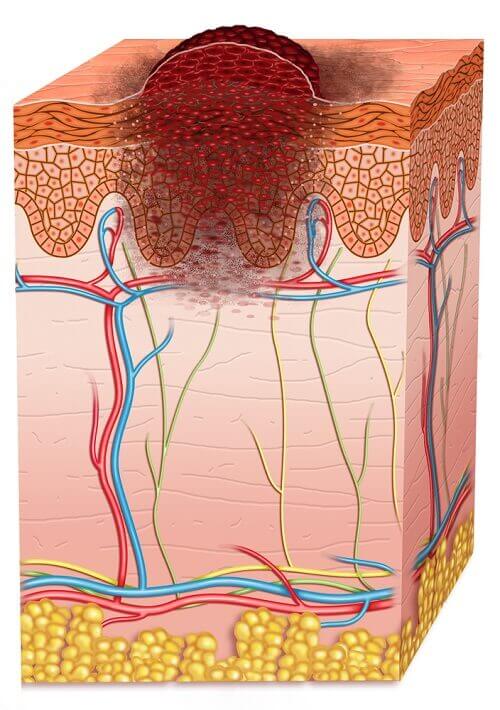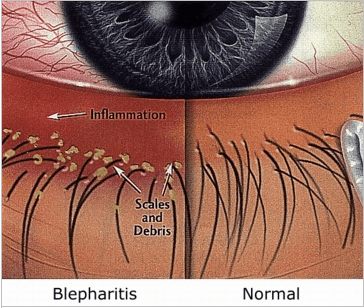
Middlesex Eye Physicians has been a part of the Middlesex and Shoreline communities for over 50 years. With a team of four ophthalmologists and one optometrist, we are able to provide a wide and comprehensive range of eye care services to ensure your complete eye health. We provide care from routine eye exams to the most current and up-to-date medical treatments and surgeries, including LASIK laser vision correction, laser-assisted cataract surgery with premium lens implants, macular degeneration treatment, glaucoma treatment, dry eye treatment, cosmetic services, and more. Middlesex Eye Physicians also offers a full-service Optical Department where we have Licensed Opticians who work with you to select the correct frames and lens that will offer you your best vision, comfort, and appearance. Our Optical Department carries a variety of eyeglasses, contact lenses, sunglasses, and sportswear for both adults, teens, children, and infants.
Our goal is to provide patients with the knowledge required to treat and care for their specific issues. Your ophthalmologist or optometrist will discuss your eye health, talk about any concerns, and apply their years of experience as an eye specialist to your specific situation.
Middlesex Eye Physicians’ office features an interactive learning center for our patients. It holds numerous brochures containing information for a variety of topics, along with a computer that will allow patients to watch short clips regarding many different topics of the eye.
Amblyopia
Amblyopia is referred to by patients as a “lazy” eye. Typically, those with amblyopia notice vision issues in one or both eyes. The brain and eyes have to work together for optimal sight. Sometimes the brain will recognize that one eye is weaker than the other and rely heavily on the stronger eye for good vision. This allows the weaker eye to wander.
Amblyopia is usually caused when an eye does not completely develop normal sight in the first several years of life, so the best time to correct amblyopia is at a young age; typically as an infant or child. Amblyopia may be an inherited defect and should be noted when you bring your child to a Middlesex Eye Physicians ophthalmologist or optometrist.
Some causes of amblyopia are:
- Strabismus: Eye misalignment caused by muscles that are not moving normally.
- Refractive error or focusing unequally: When one eye is more blurred than another eye and uncorrected by an eyeglass prescription, the brain will want to utilize the ‘good eye’ and turn the weaker eye off which makes the weaker eye amblyopic. This is a difficult one to detect in childhood because the appearance of the eyes look similar but the vision is not.
- Eye disease: A cataract (the natural lens inside your eye becomes cloudy) may blur images reaching the retina causing decreased vision in the eye.
Amblyopia can be diagnosed when seen by your ophthalmologist at a routine eye examination. If the physician notes a great difference between the patient’s eye when performing an evaluation, they may inform you of the amblyopic eye. Children diagnosed with amblyopia can be prescribed glasses and asked to wear a patch over their stronger eye to allow the weaker eye to gain better vision. If related to an eye muscle imbalance, surgery may be discussed.
Conjunctivitis
(A.K.A. Pink Eye)
Patients presenting with inflammation of the conjunctiva (inside the lids, or red-eye) tend to experience itching, tearing, and a gritty irritation in their eyes. Sometimes the eye will have discharge some may wake up with their eyes crusted shut. Conjunctivitis needs to be evaluated by your Middlesex Eye Physicians ophthalmologist or optometrist since there are many causes of red-eye, and treatment will depend on the type of conjunctivitis.
Types of Conjunctivitis
- Allergic Conjunctivitis: sensitivity to environmental substances; typically characterized by itching, tearing, redness, sensitivity to light, and possible discharge.
- Bacterial Conjunctivitis: typically caused by bacterial infection; characterized by discharge, foreign body sensation, and redness –could be contagious.
- Giant Papillary Conjunctivitis: typically caused by an allergic reaction to contact lenses.
- Viral Conjunctivitis: usually contagious; viral infection.
There are other causes of conjunctivitis. Please visit your ophthalmologist or optometrist for detailed information and treatment on your eye condition.
Diabetic Eye Care
Diabetes is a condition that affects your whole body including your eyes. If your diabetes is not well controlled or if you were diagnosed with Type 1 diabetes you may have a higher risk of diabetic complications. Patients with diabetes also have a higher risk of visual loss.
Fluctuation in your blood sugar can cause blurred vision. If your blood sugar levels are elevated it causes your natural lens in your eye to swell which causes this blurriness. There may also be a more serious effect from your disease.
When blood sugar is not controlled, it can also cause many issues in your body including your eyes. Sometimes your Middlesex Eye Physicians ophthalmologist will see swelling in your retina or new blood vessel growth when they dilate your eyes. New abnormal blood vessel growth is called neovascularization. The abnormal growth of these blood vessels are fragile and weak and may tend to bleed. There are many diagnostic methods such as a fluorescein angiogram and Optical Coherence Tomography (OCT) to enable our physicians to see the extent of the new growth. If treatment is needed, your Middlesex Eye Physicians ophthalmologist or optometrist will discuss further with you.
Ptosis
Ptosis (drooping or sagging eyelids) is typically caused by weakness of a muscle in the eyelid, called the levator muscle or by problems with the nerve that sends the message to the levator muscle. Other reasons causing ptosis can be related to disease or injury.
Patients with ptosis often complain they cannot fully see out of the eye due to the lid obstruction. Fatigue from trying to hold the lids open is another issue from ptosis.
Testing:
If you have a visual complaint due to the obstruction of your drooping eyelids, we will perform a series of testing. Some tests that we use to determine the severity of your ptosis are visual field and photos.
Fortunately, there is help for drooping lids. An eyelid surgery called blepharoplasty. Blepharo (referring to the eyelid) and plasty (referring to the surgery) is performed by our Middlesex Eye Physicians ophthalmologists at the surgery center. The excess tissue and fat may be removed from your lids; your levator muscle may be reinforced.

Skin Tumor
It is very important to regularly evaluate facial skin for any abnormal growths. If you notice a new growth or an older growth is not going away it is important to have this checked by a medical professional. While most growths when evaluated are benign, there are times when the growth can be a form of skin cancer. Some growths look like moles while others may differ in color or size.
The skin around the eyes and eyelids are very sensitive and at Middlesex Eye Physicians we have specialists specially trained to treat skin growths and lesions in this area. If you have the typical skin growth (skin tumor) and it is found not to be cancerous, this may be removed in our minor surgical suite in our office. Other larger growths that are possible skin cancer may require treatment at our eye surgery center by our board-certified ophthalmologist.
Once removed, your growth will be sent for evaluation. When reviewed by our pathology specialists, the physician will determine the course of treatment, if any.
Only your Middlesex Eye Physicians ophthalmologist can biopsy and evaluate your skin tumor.
Entropion / Ectropion
Ectropion (eyelid turning out)
Most patients are concerned with excessive tearing and occasional blurring of vision. The weak muscle is unable to maintain the seal when blinking causing the eye to lose its ability to keep tears on the surface.
Entropion (eyelid turning in)
Occasionally, patients will have the concern of a foreign body sensation, redness of the eye, or blurring of vision. When your eyelid is turned into the eye, you may experience the lower lid lashes rubbing into the eye causing this irritation.
With both conditions, you are susceptible to corneal drying, corneal abrasions, possible eye infections, and diseases.
What are the treatment options?
Some may require drops and ointments while others may need a simple outpatient procedure at our dedicated eye surgery center. Our Middlesex Eye Physicians ophthalmologists will evaluate your condition to determine treatment options.
Blepharitis

What is Blepharitis?
Blepharitis is a condition where the eyelid margins become inflamed; sometimes with redness, itching, and some swelling. Occasionally your eyes may feel as if there is foreign matter in them due to the flaking skin becoming embedded into your eyelashes.
Chalazion
A chalazion is an inflammation or “lump” in the lid or lid margin of your eyelid. Sometimes a chalazion can be relieved by using warm compresses. Instructions on how to apply a warm compress and how to perform proper lid hygiene will be given to you at your ophthalmic appointment.
Surgical Treatment:
Occasionally chalazia need surgical intervention. This minor procedure at our office allows our ophthalmologists to drain the chalazion to reduce the inflammation. Antibiotic medication may be prescribed by your ophthalmologist.

